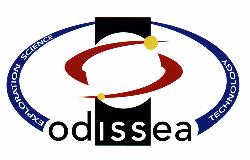Past Projects

B3D
The study of three-dimensional Ballistocardiography during long-duration spaceflights.
more...

SPIN
Investigating the relationship between vestibular and autonomic effects of long-duration spaceflights.
more...
Central Autonomic Network

A thorough review of brain imagery literature shows there are common structures involved in emotion regulation, cognitive processing and autonomic activation regulation. These are part of what has alternatively been termed the Central Autonomic Network (Benarroch, 1993), the Anterior Executive Region (Devinsky, Morrell & Vogt, 1995) and the Emotion Circuit (Damasion, 1998).
In this project, we aimed at disentangling activation due to emotion induction, cognitive workload and “pure” autonomic arousal due to a cold pressor test.
ASMO

In this broad project, we investigated sleep, circadian rhythms and physical activity during two Antarctic summer expedition, the construction expeditions of the new Belgian Antarctic Princess Elisabeth station. This was the first experiment ever with polysomnographic recordings in such a large sample (N=21) in Antarctica. Among the most interesting results was the characterization of an inverted pattern of sleep architecture and a dissociation of the cortisol and melatonin rhythms.
Follow-up: ESCOM and Cognipole projets.
The study is sponsored by the Belgian Defense, the Belgian Science Policy.

|

|
Parabolic flights
The rapid adaptation of the cardiovascular system to acute gravity changes was studied during the 29th ESA Parabolic flight campaign. Short periods (~20 s.) of microgravity are induced onboard the A-300 Zero-g airplane operated by NOVESPACE via a parabolic flight profile. Pulse transit time, systolic time intervals and stroke volume were analyzed during the highly non-stationary conditions induced between the gravity transitions.
Odissea mission to the International Space Station (2002)

During the ISS 5S (Soyuz TMA-1) Belgian “Odissea” Mission, Frank De Winne participated to the CARDIOCOG experiment. The Cardiocog-Respi experiment aimed at the characterization of postflight autonomic re-adaptation to normal gravity with the use of imposed and controlled breathing protocols.
The Cardiocog-Text section of the protocol was on the assessment of cognitive performance and autonomic adaptation during spaceflight. This was the first objective measure of altered executive functions during spaceflight.
Cognitive performance assessment (military students pilots, jet fighter pilots)
Changes in cognitive performance associated with stressful conditions or extreme environments are linked with changes in autonomic activity, namely a decreased reactivity for challenge. Furthermore, including emotionally and specifically relevant material to the cognitive testing was shown to increase the sensitivity to discrete changes in mental status.
Predictive performance assessment (student pilots, athlete students and elite soldiers)
Investigating a broad range of psychological tests and physiological variables prior to critical performance to identify precocious markers of performance deterioration.
Top athletes real-time monitoring
Autonomic reactivity is a potential precocious marker of overreaching/overtraining.
Autonomic cardio-respiratory regulation in hypergravity on the ESA Short Arm Human Centrifuge (SAHC).
Hypergravity mimics postflight results from microgravity, indicating the blood pooling in the lower part of the body (lower limbs and splanchnic area) to play a central role in the process of cardiovascular response to hypergravity.
Antarctica Sleep Monitoring (ASMO)
Investigating sleep, circadian rhythms and physical activity during an Antarctic summer expedition. First experiment ever with large sample (N=21). Characterization of inverted pattern of sleep architecture and dissociation of cortisol and melatonin rhythms.
more...
SAHC/MEDES
Investigating the effects of gravity on the cardiovascular response and perception of tilt.
